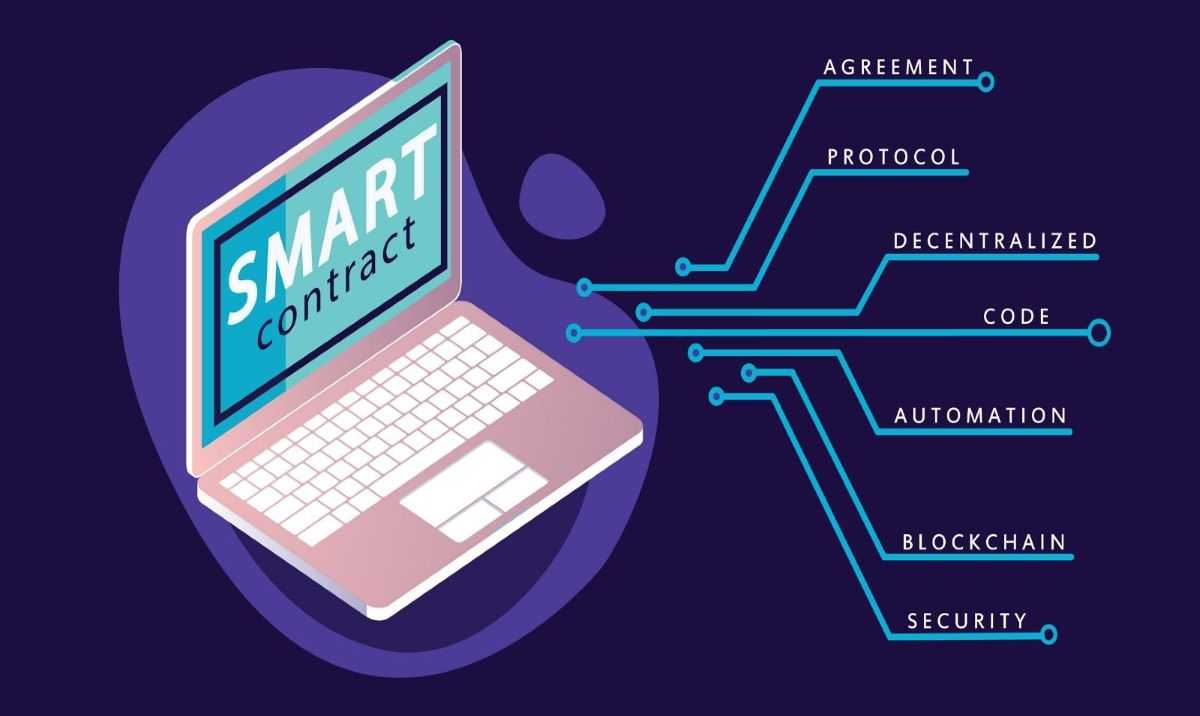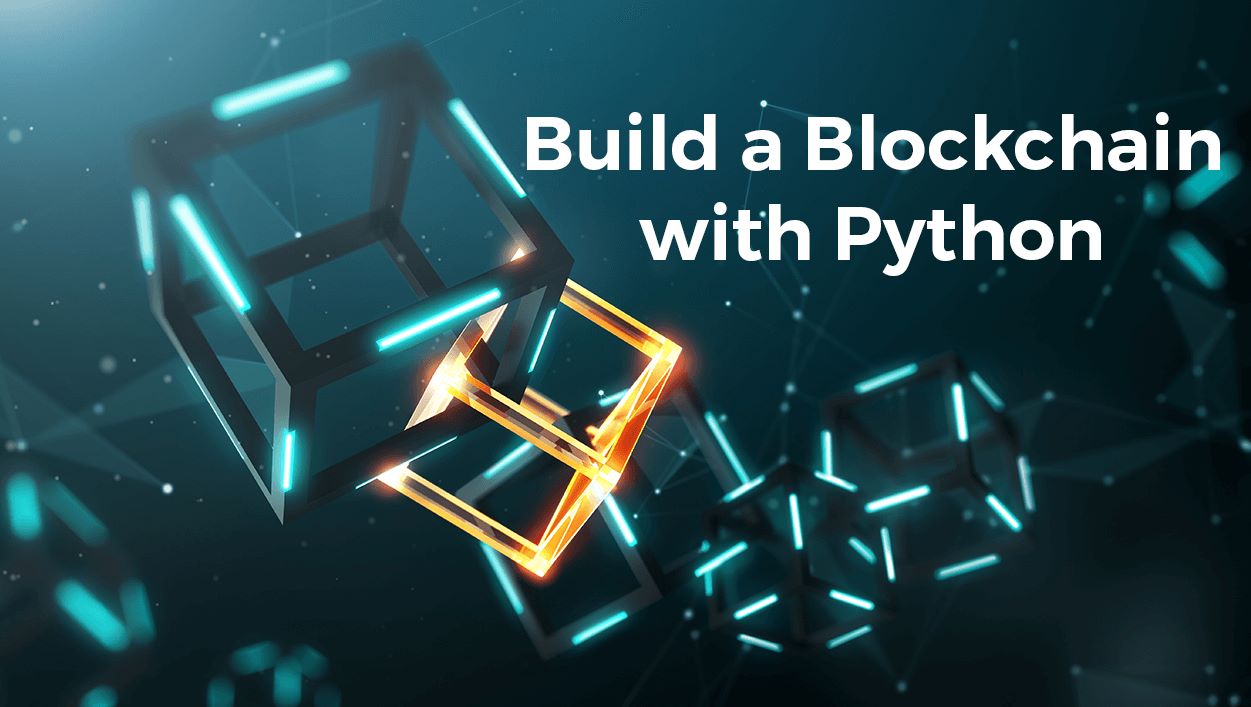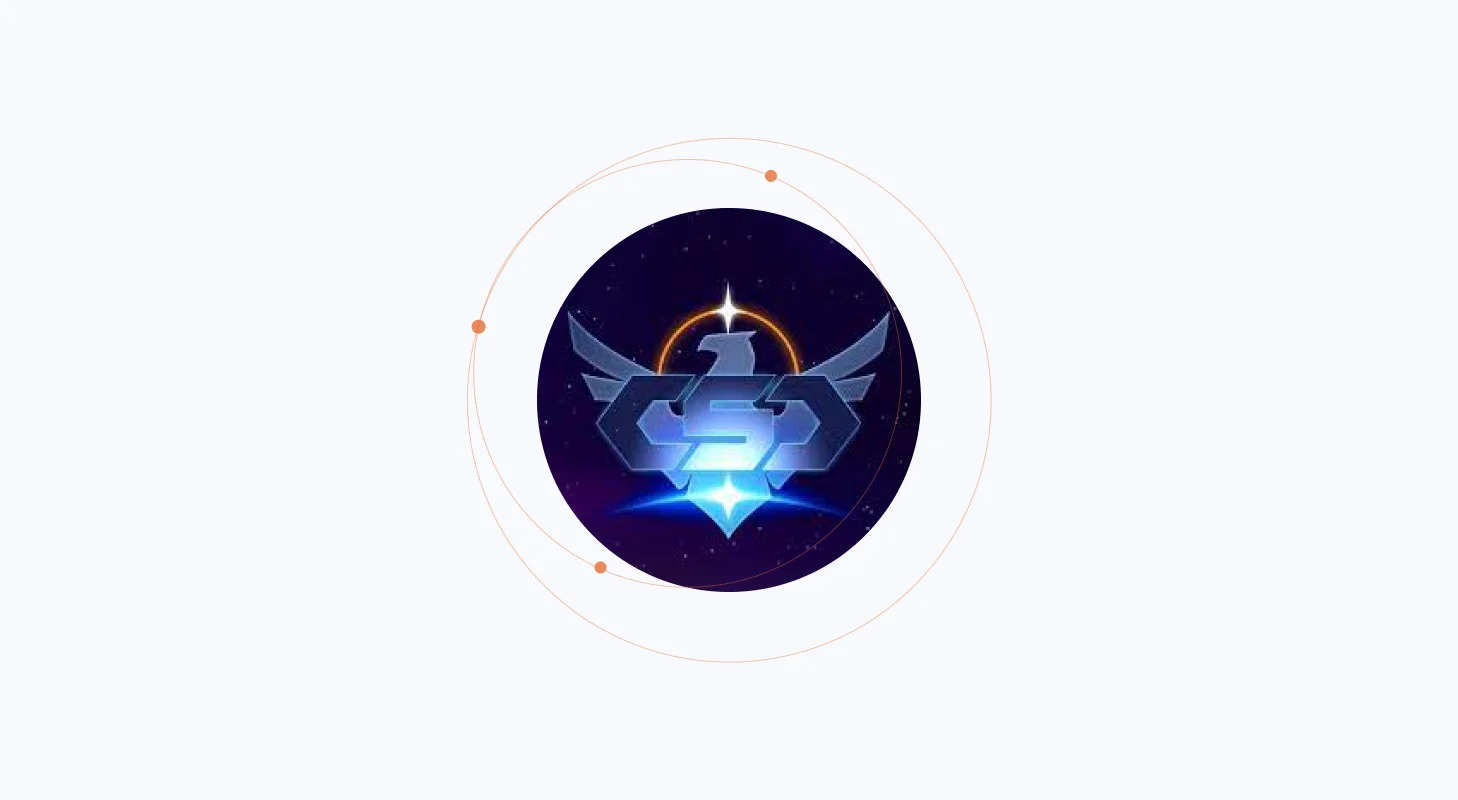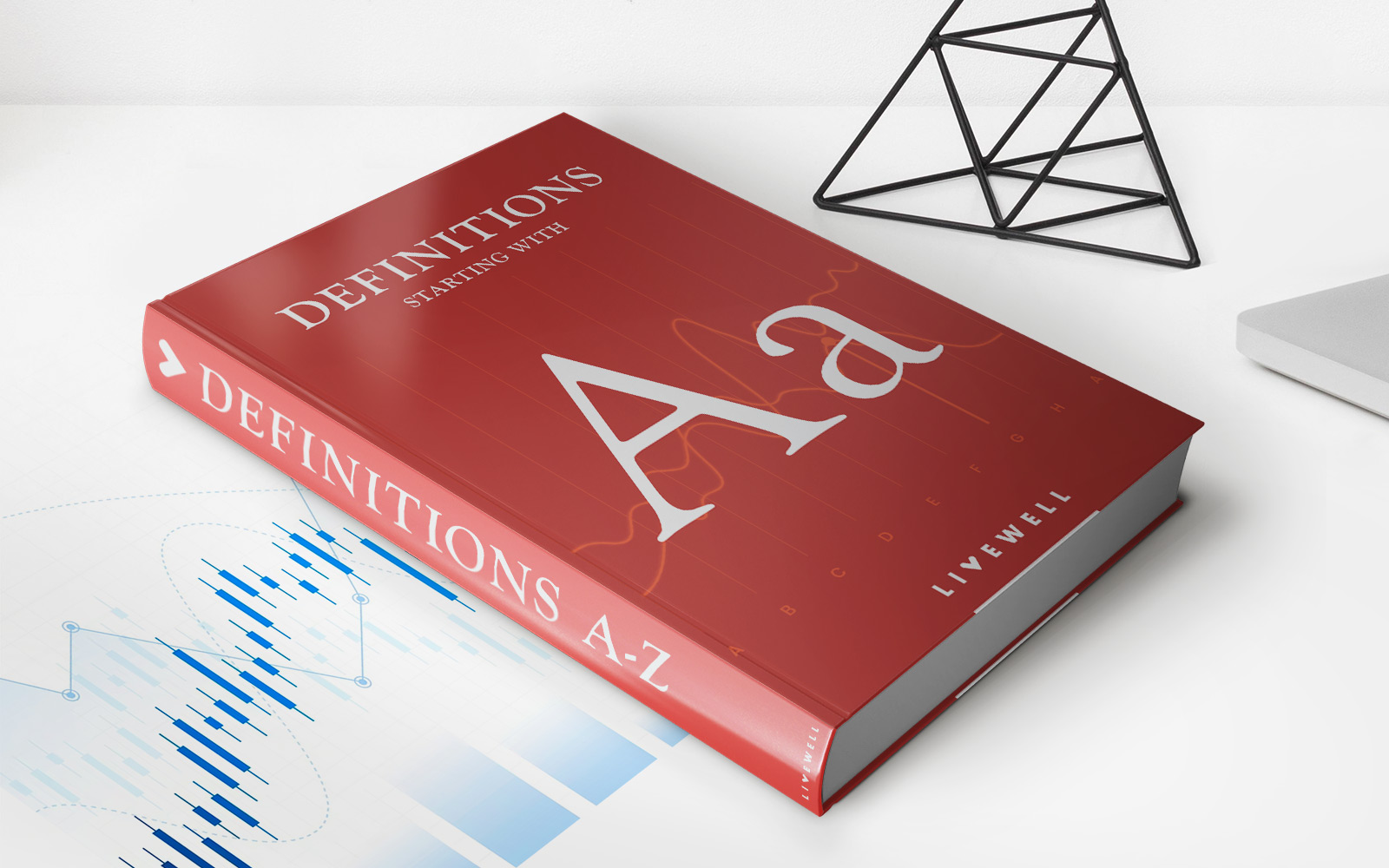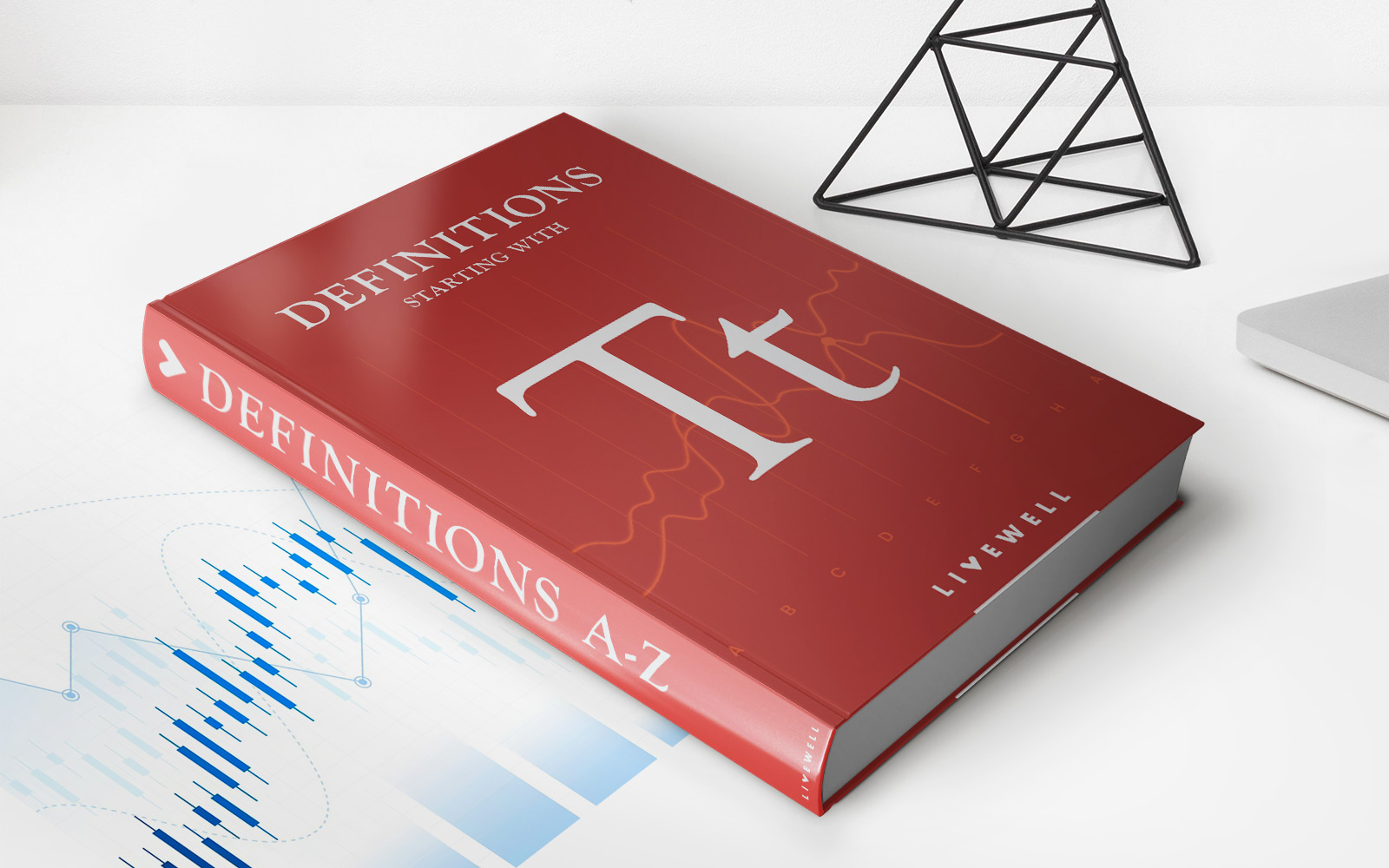

Finance
How Are Transactions Verified In Blockchain
Published: October 23, 2023
Learn how transactions are verified in blockchain and their impact on the finance industry. Understand the role of decentralized consensus mechanisms in securing financial transactions.
(Many of the links in this article redirect to a specific reviewed product. Your purchase of these products through affiliate links helps to generate commission for LiveWell, at no extra cost. Learn more)
Table of Contents
Introduction
In today’s digital world, the concept of trust in financial transactions has become increasingly important. With the rise in online banking, mobile payments, and e-commerce, the need for secure and transparent transactions has become paramount. This is where blockchain technology comes into play.
Blockchain is a decentralized and distributed ledger technology that allows for the secure and transparent recording of transactions. It eliminates the need for a centralized authority, such as a bank or government, to validate and verify transactions. Instead, blockchain relies on a network of computers, known as nodes, to validate and verify transactions through a consensus mechanism.
But how exactly are transactions verified in a blockchain? In this article, we will explore the process of transaction verification in blockchain and the key concepts that make it possible.
To understand how transactions are verified, it is essential to have a basic understanding of what blockchain is and how it works.
At its core, blockchain is a series of blocks that contain a list of transactions. These blocks are linked to each other in a chain-like structure, hence the name “blockchain.” Each block contains a unique identifier, a timestamp, and a reference to the previous block.
When a new transaction is initiated, it is broadcasted to the network and added to a pool of pending transactions. Miners, who are participants in the blockchain network, then compete to solve a complex mathematical problem that allows them to validate and add the new block of transactions to the blockchain.
However, before the new block is added to the blockchain, it must go through a verification process to ensure the integrity and validity of the transactions.
One of the key components of transaction verification in blockchain is the use of digital signatures. These digital signatures provide a way to authenticate the identity of the sender and ensure that the transaction has not been tampered with.
What is Blockchain
Blockchain is a revolutionary technology that serves as a decentralized and immutable ledger for recording and verifying transactions. It is essentially a distributed database that is shared and synchronized across multiple nodes in a network.
The concept of blockchain was first introduced in 2008 by an individual or group of individuals using the pseudonym Satoshi Nakamoto. Its initial implementation was as the underlying technology for the cryptocurrency Bitcoin. However, blockchain technology has since expanded beyond cryptocurrencies and found applications in various sectors, including finance, supply chain management, healthcare, and more.
At its core, a blockchain is a chain of blocks, where each block contains a set of transactions. These blocks are linked to each other using cryptographic hashes, forming an unbroken chain of records. This ensures the integrity and immutability of the data stored in the blockchain.
One of the fundamental features of a blockchain is its decentralized nature. Unlike traditional centralized systems, where a single authority controls and manages the data, blockchain operates on a peer-to-peer network. Each participant in the network, known as a node, maintains a copy of the entire blockchain. This decentralized structure eliminates the need for intermediaries and central authorities, making transactions more transparent and secure.
Another vital characteristic of blockchain is its immutability. Once a block is added to the blockchain, it becomes extremely difficult to alter or delete the data within that block. This is achieved through the use of cryptographic hash functions, which generate a unique identifier for each block. Modifying the contents of a block would require making changes to all subsequent blocks, which is computationally infeasible due to the distributed nature of the blockchain.
Blockchain technology also ensures transparency in transactions. As every transaction is recorded in a block, and the blocks are linked in a chronological order, anyone can trace the history of a transaction back to its origin. This transparency increases trust and helps prevent fraud and manipulation in financial transactions.
In summary, blockchain is a decentralized, immutable, and transparent ledger technology that revolutionizes the way transactions are recorded and verified. Its applications extend far beyond cryptocurrencies and hold immense potential for transforming various industries.
How Transactions are Verified
The verification of transactions in a blockchain involves several key processes and mechanisms to ensure the accuracy, integrity, and authenticity of the transactions. Let’s delve into the steps involved in verifying transactions in a blockchain.
1. Digital Signatures: In a blockchain, every transaction is accompanied by a digital signature. A digital signature is a mathematical algorithm that proves the authenticity of the sender’s identity and ensures that the transaction has not been tampered with. It provides a unique cryptographic proof that the transaction originated from the legitimate sender.
2. Consensus Mechanisms: The consensus mechanism is a critical component of blockchain networks. It is the process by which nodes in the network agree upon the validity of transactions and reach a consensus on the state of the blockchain. Various consensus mechanisms, such as Proof of Work (PoW), Proof of Stake (PoS), and others, are employed to verify transactions.
3. Proof of Work: The Proof of Work consensus mechanism is commonly used in blockchain networks, including the Bitcoin network. Miners within the network compete to solve complex mathematical puzzles, which requires significant computational power and energy expenditure. The miner who successfully solves the puzzle first earns the right to add the block of transactions to the blockchain. This process ensures that transactions are verified and added in a secure manner.
4. Proof of Stake: In the Proof of Stake consensus mechanism, the right to add a new block to the blockchain is determined based on the stake or ownership of cryptocurrencies held by a node. Rather than solving computational puzzles, validators are chosen to add new blocks based on their ownership and commitment to the network. This mechanism is considered more energy-efficient and environmentally friendly compared to Proof of Work.
5. Other Consensus Algorithms: In addition to Proof of Work and Proof of Stake, there are several other consensus algorithms used in different blockchain networks. Some of these include Delegated Proof of Stake (DPoS), Practical Byzantine Fault Tolerance (PBFT), and Directed Acyclic Graph (DAG) based algorithms. Each algorithm has its own approach to verifying and validating transactions.
Overall, the verification of transactions in a blockchain relies on cryptographic techniques, consensus mechanisms, and the participation of network nodes. By employing these mechanisms, blockchain networks ensure the accuracy, security, and transparency of transactions, making them highly reliable in a decentralized environment.
Digital Signatures
Digital signatures play a crucial role in the verification process of transactions within a blockchain. They provide a means to authenticate the identity of the sender, ensure the integrity of the transaction data, and prevent tampering or forgery.
A digital signature is a mathematical algorithm applied to a message or data that creates a unique digital identifier, also known as a hash or digest. This signature is generated using a private key that belongs to the sender. The private key is kept confidential by the sender, while the corresponding public key is shared with the network participants.
To create a digital signature, the sender uses a cryptographic algorithm to transform the transaction data into a unique hash. This hash is then encrypted using the sender’s private key, resulting in a digital signature that is mathematically linked to the transaction data.
When the recipient receives the transaction, they can use the sender’s public key to decrypt and verify the digital signature. This allows them to authenticate the sender and confirm that the transaction has not been altered since it was signed.
The use of digital signatures provides several key benefits in the verification of transactions:
1. Authentication: Digital signatures provide a method to verify the identity of the sender. By using the sender’s private key, the recipient can be confident that the transaction originated from the expected source.
2. Integrity: Digital signatures ensure that the transaction data has not been tampered with or modified during transmission. Even a minor change in the transaction data would result in a different digital signature, alerting the recipient to potential tampering attempts.
3. Non-repudiation: A digital signature provides non-repudiation, meaning the sender cannot deny sending the transaction. Since the digital signature is unique to the sender and requires their private key to create, it serves as strong evidence of the sender’s involvement.
4. Security: Digital signatures provide an additional layer of security for transactions within a blockchain. Even if an attacker gains access to the blockchain and attempts to tamper with or forge transactions, the use of digital signatures makes it extremely difficult to alter the data without detection.
Overall, digital signatures are a fundamental component of transaction verification in blockchain. They enhance the security, integrity, and trustworthiness of transactions, ensuring that only valid and authentic transactions are added to the blockchain.
Consensus Mechanisms
Consensus mechanisms are fundamental to the operation of a blockchain network. They are the protocols or algorithms that enable participants in the network to agree on the validity of transactions and reach a consensus on the state of the blockchain. Consensus mechanisms ensure that all nodes in the network have a shared and consistent view of the transaction history.
There are several consensus mechanisms used in blockchain networks, each with its own unique approach to transaction verification. The two most well-known mechanisms are Proof of Work (PoW) and Proof of Stake (PoS).
Proof of Work (PoW): PoW is the consensus mechanism used by Bitcoin and many other cryptocurrencies. With PoW, miners compete to solve complex mathematical puzzles in order to validate and add new blocks of transactions to the blockchain. The first miner to solve the puzzle earns the right to add the block and is rewarded with newly minted cryptocurrencies. PoW requires significant computational power and energy consumption, making it secure but resource-intensive.
Proof of Stake (PoS): PoS is an alternative consensus mechanism that aims to address the resource consumption issues of PoW. In PoS, validators are chosen to create new blocks based on the number of cryptocurrencies they hold and are willing to “stake” as collateral. Validators are selected randomly, but the probability is proportional to their stake. This mechanism reduces energy consumption and allows for a more energy-efficient blockchain network.
In addition to PoW and PoS, there are other consensus mechanisms that have emerged in recent years, including:
- Delegated Proof of Stake (DPoS): DPoS introduces the concept of delegates who are elected by coin holders to perform transaction verification and block creation. Delegates take turns producing blocks, and coin holders can vote to replace delegates who fail to fulfill their responsibilities.
- Practical Byzantine Fault Tolerance (PBFT): PBFT is a consensus mechanism that focuses on reaching agreement in distributed systems where some nodes may be faulty or malicious. It requires a predetermined number of nodes to agree on the order of transactions and ensures that the agreed-upon transactions are considered valid.
- Directed Acyclic Graph (DAG) based algorithms: DAG-based algorithms, such as the Tangle used by IOTA, eliminate the concept of blocks and miners. Instead, each transaction verifies two previous transactions, creating a mesh-like structure of transactions. This allows for high scalability and fast transaction confirmation without the need for traditional mining.
These are just a few examples of the consensus mechanisms used in blockchain networks. Each mechanism has its own advantages and considerations, such as security, scalability, energy efficiency, and decentralization. The choice of consensus mechanism depends on the specific goals and requirements of the blockchain network.
Consensus mechanisms are vital to maintaining the integrity, security, and decentralization of blockchain networks. By providing a way to verify and agree upon transaction validity, consensus mechanisms ensure the smooth operation of blockchain platforms and enable trust among participants in the network.
Proof of Work
Proof of Work (PoW) is a consensus mechanism widely used in blockchain networks, most notably in the Bitcoin network. It is designed to ensure the security, integrity, and immutability of the blockchain through a competitive process of solving complex mathematical puzzles.
In a PoW system, miners compete with each other to find a solution to a cryptographic puzzle. This puzzle requires a significant amount of computational power and energy to solve. The puzzle itself is created by the network, and its difficulty is adjusted to maintain a consistent block creation time.
Miners in the network continuously perform calculations, trying different inputs until they find a solution that satisfies the puzzle’s requirements. This solution provides proof that the miner has invested a certain amount of computational work, hence the name “Proof of Work.”
Once a miner finds a valid solution, they broadcast it to the network, along with a new block of transactions. Other participants in the network then verify the solution and validate the block. Once the block is validated, it is added to the blockchain, and the miner is rewarded with newly minted cryptocurrency as an incentive for their efforts.
There are several key characteristics and benefits of the PoW consensus mechanism:
- Security: PoW is highly secure due to the computational power required to solve the puzzles. Attackers would need to control a majority of the network’s computing power to manipulate the blockchain, making it economically infeasible to carry out attacks.
- Decentralization: PoW enables a decentralized network by allowing anyone with sufficient computational power to participate as a miner. This decentralization ensures that no single entity has control over the blockchain, enhancing security and preventing censorship.
- Immutability: Once a block is added to the blockchain, it becomes extremely difficult to alter or remove. Modifying a block would require redoing the computational work for that block and all subsequent blocks, which becomes increasingly difficult as more blocks are added to the chain.
- Fairness: PoW provides an equal opportunity for all miners to participate in the block creation process. Miners with more computational power have a higher chance of solving the puzzle, but the rewards are distributed based on the effort invested.
However, PoW does have some drawbacks, including high energy consumption and the potential for centralization of mining power. As the difficulty of the puzzles increases, more computational power is required, resulting in significant energy consumption. Additionally, as mining becomes more competitive, large mining operations with access to substantial resources can gain a greater advantage, potentially leading to centralization.
Despite the drawbacks, PoW remains a widely used and trusted consensus mechanism in many blockchain networks. Its security, decentralization, and immutability features make it a robust and reliable method for verifying transactions and maintaining the integrity of the blockchain.
Proof of Stake
Proof of Stake (PoS) is a consensus mechanism used in blockchain networks that aims to address the energy consumption and scalability limitations of Proof of Work (PoW). Unlike PoW, which relies on computational power, PoS selects block validators based on their ownership or “stake” in the network’s native cryptocurrency. In other words, the more coins a participant holds and is willing to “stake” as collateral, the higher their chances of being chosen to validate and add new blocks to the blockchain.
In a PoS system, validators are chosen randomly based on a predetermined algorithm that takes into account the size of their stake. Validators are responsible for validating transactions, creating new blocks, and maintaining the blockchain’s integrity. Additionally, validators place a portion of their cryptocurrency holdings as collateral, which can be forfeited if they act maliciously or try to manipulate the system.
Key features and benefits of PoS include:
- Energy Efficiency: PoS requires significantly less computational power compared to PoW since block validators are not required to solve complex mathematical puzzles. This makes PoS systems more energy-efficient and environmentally friendly.
- Scalability: PoS has the potential to be more scalable than PoW since block validation is not dependent on computational power. As a result, PoS networks can process transactions more quickly and efficiently, enabling greater scalability.
- Decentralization: PoS encourages wider participation in the network by allowing anyone with coins to become a validator. This reduces the concentration of power and promotes a more decentralized network, reducing the risk of a majority attack.
- Security: While PoS does not rely on computational power for security like PoW, it still requires a significant amount of cryptocurrency as collateral. This disincentivizes malicious behavior, as validators would risk losing their stake if they act in a way that harms the network.
However, PoS has its own challenges and considerations. One concern is the “nothing at stake” problem, where validators may have an incentive to validate multiple forks and generate conflicting transactions. To mitigate this issue, various mechanisms and penalties are implemented to discourage validators from behaving dishonestly.
Furthermore, PoS can potentially lead to a concentration of wealth and power, as those with larger stakes have a higher probability of being chosen as validators and earning rewards. This can create a barrier to entry for new participants and affect the decentralized nature of the network.
Despite these challenges, PoS has gained significant traction in different blockchain networks and serves as a viable alternative to PoW. Its energy efficiency, scalability, and potential for decentralization make it an attractive consensus mechanism for many blockchain projects.
Other Consensus Algorithms
While Proof of Work (PoW) and Proof of Stake (PoS) are the most well-known and widely used consensus mechanisms, there are several other algorithms that have emerged in the blockchain space. These alternative consensus algorithms aim to address different concerns, such as scalability, energy efficiency, and decentralization. Let’s explore a few of these consensus algorithms:
- Delegated Proof of Stake (DPoS): DPoS introduces a voting system where token holders elect a limited number of delegates to validate transactions and create new blocks. These delegated nodes represent the interests of the community and take turns producing blocks. DPoS combines the benefits of decentralization in PoS with a more efficient block creation process.
- Practical Byzantine Fault Tolerance (PBFT): PBFT is a consensus algorithm designed for distributed systems where some nodes may be faulty or malicious. It requires a predetermined number of nodes, known as replicas, to agree on the order of transactions. PBFT provides fast transaction finality and is commonly used in permissioned blockchains that require high throughput and low latency.
- Directed Acyclic Graph (DAG) based algorithms: DAG-based algorithms, such as the Tangle used by IOTA, eliminate the concept of blocks and miners. Each transaction verifies and confirms two previous transactions, creating a mesh-like structure. This structure allows for high scalability and fast transaction confirmation without the need for traditional mining.
- Proof of Authority (PoA): PoA is a consensus algorithm where validators, often called authorities, are predetermined and known entities. These validators have a reputation at stake and are responsible for validating transactions and creating new blocks. PoA is popular in private and consortium blockchains that prioritize efficiency and throughput over decentralization.
- Practical Byzantine Fault Tolerance (PBFT): PBFT is a consensus algorithm designed for distributed systems where some nodes may be faulty or malicious. It requires a predetermined number of nodes, known as replicas, to agree on the order of transactions. PBFT provides fast transaction finality and is commonly used in permissioned blockchains that require high throughput and low latency.
- Proof of Elapsed Time (PoET): PoET is a consensus algorithm developed by Intel. It utilizes a trusted execution environment (TEE) to randomly select a validator to create a block. Validators compete by performing a cryptographic puzzle, and the one who solves it first gets the right to create the block. PoET reduces energy consumption by allowing nodes to enter a low-power state when not actively participating in the consensus process.
These are just a few examples of the diverse range of consensus algorithms implemented in blockchain networks. Each algorithm has its own strengths and considerations, addressing different requirements and priorities of specific blockchain projects. The choice of consensus algorithm depends on factors such as the desired level of decentralization, scalability goals, security requirements, and the specific use case of the blockchain network.
As the blockchain ecosystem continues to evolve, new consensus algorithms are being developed and tested, aiming to further improve the efficiency, scalability, and security of decentralized systems.
Transaction Verification Process
The transaction verification process in a blockchain involves several steps to ensure the accuracy, integrity, and validity of transactions. Let’s explore the typical process that transactions undergo in a blockchain network:
- Transaction Initiation: A transaction is initiated when a user sends a request to transfer digital assets or perform a specific action on the blockchain. The transaction includes information such as the sender’s wallet address, the recipient’s wallet address, and the amount or nature of the transaction.
- Transaction Propagation: Once a transaction is initiated, it is broadcasted to the network by the sender’s node. The transaction is then propagated to other nodes in the network, ensuring that all participants are aware of the pending transaction.
- Transaction Validation: Validators in the network validate the transaction to ensure its integrity and compliance with the rules of the blockchain protocol. This validation process typically involves checking the sender’s digital signature, verifying that the sender has sufficient funds or permissions, and confirming that the transaction is properly formatted.
- Inclusion in a Block: Validated transactions are bundled together into blocks. Miners or validators combine multiple transactions and compete to solve a complex mathematical puzzle to add the block to the blockchain. The process of adding a block, which contains verified transactions, enhances the security and immutability of the transactions.
- Consensus on Block Addition: Once a miner solves the puzzle and finds a valid solution, they broadcast it to the network. Other participants in the network validate the solution and verify that the block and its transactions are valid. Consensus is reached when the majority of participants in the network agree on the validity of the block and add it to their version of the blockchain.
- Block Confirmation: After a new block is added to the blockchain, it goes through a confirmation process. The confirmation process involves subsequent blocks being added on top of the newly added block, further enhancing the security and immutability of the transaction. The more blocks added on top, the higher the level of confirmation and trust in the transaction.
- Transaction Finality: Once a transaction is confirmed by a sufficient number of blocks, it achieves finality, meaning that it is nearly impossible to reverse or alter the transaction. This finality provides assurance to the participants that the transaction is considered valid and immutable within the blockchain.
Throughout this transaction verification process, cryptographic algorithms, digital signatures, and consensus mechanisms ensure the trust, transparency, and security of transactions within the blockchain network.
It’s important to note that the specific details of the transaction verification process can vary depending on the blockchain protocol and consensus algorithm being used. Different blockchain networks may have their own unique steps or variations to optimize for factors like scalability, speed, or specific use case requirements.
Role of Miners
In a blockchain network, miners play a crucial role in the transaction validation and block creation process. Their responsibilities include verifying the authenticity and integrity of transactions, solving complex mathematical puzzles, and adding new blocks to the blockchain. Let’s explore the role of miners in more detail:
Transaction Verification: Miners are responsible for validating transactions to ensure their accuracy and compliance with the blockchain’s rules and protocols. They verify the digital signatures of transactions, confirming that the transactions were initiated by the legitimate senders and have not been tampered with.
Block Creation: Once miners have verified the transactions, they bundle them together into blocks. These blocks contain a set of validated transactions, along with a reference to the previous block in the blockchain. Miners then compete to solve a complex mathematical puzzle, known as the proof-of-work (PoW) challenge, which requires significant computational power and energy expenditure.
Proof-of-Work: Miners use computational power to solve the PoW puzzle. The puzzle is designed to be difficult to solve but easy to verify. Miners continuously make attempts to find a solution by iterating through different inputs until they find one that satisfies the puzzle’s requirements. The first miner to find a valid solution broadcasts it to the network.
Adding Blocks to the Blockchain: When a miner successfully solves the PoW puzzle and finds a valid solution, they announce it to the network. Other participants in the network verify the solution and, if valid, agree to add the new block to their version of the blockchain. Consensus is reached when the majority of network participants validate and accept the new block. Once added, the block becomes a permanent part of the blockchain’s history.
Rewards and Incentives: Miners are often rewarded for their computational effort and contribution to maintaining the blockchain network’s security and integrity. In some blockchain networks, miners receive newly minted cryptocurrencies as a block reward. Additionally, they may also receive transaction fees associated with the validated transactions included in the block.
Network Security: The presence of multiple miners in a blockchain network enhances its security. The decentralized nature of the network and the consensus mechanism, such as PoW, make it computationally expensive and impractical for attackers to manipulate or compromise the blockchain. Miners’ role in validating and adding blocks reinforces the robustness and trustworthiness of the blockchain network.
It’s worth noting that the specific responsibilities and incentives of miners can vary depending on the blockchain protocol and consensus mechanism employed. Consensus mechanisms like Proof of Stake (PoS) may have different roles and responsibilities for participants in the network, such as validators, who may replace miners in the block creation process.
In summary, miners play a vital role in validating transactions, adding blocks to the blockchain, and maintaining the security of the network. Their computational power and participation contribute to the decentralized and trustless nature of blockchain technology.
Transaction Confirmation
In a blockchain network, transaction confirmation is an essential step in ensuring the reliability and immutability of transactions. Confirmation refers to the process of validating and verifying a transaction by multiple blocks added to the blockchain. Let’s delve into the significance and mechanics of transaction confirmation:
Initial Verification: When a transaction is initially broadcasted to the network, it goes through a process of initial verification. Validators or miners check the transaction’s digital signature, ensuring that it is valid and has not been tampered with. This initial verification helps eliminate fraudulent or invalid transactions.
Inclusion in a Block: After initial verification, the transaction is added to a pool of pending transactions. Miners select transactions from this pool to include in the next block they attempt to add to the blockchain. Transactions compete for inclusion based on factors such as transaction fees, priority, or other criteria set by the miners.
Block Confirmation: Once a miner successfully adds a block to the blockchain, the transaction included in that block receives its first confirmation. The more blocks added on top of the block containing the transaction, the higher the number of confirmations it obtains. Each subsequent block added to the blockchain strengthens the transaction’s confirmation and reliability.
Waiting for Confirmations: The number of confirmations needed for a transaction to be considered fully confirmed depends on various factors, including the specific blockchain protocol and the nature of the transaction. In many cases, a single confirmation is sufficient for minor or low-value transactions. However, for larger transactions or transactions involving valuable assets, multiple confirmations are advised to ensure greater security and trust.
Security and Finality: Confirmations offer security and finality to transactions within the blockchain. As more blocks are added on top of the block containing the transaction, it becomes increasingly improbable for an attacker to alter or reverse the transaction. This level of security ensures that once a transaction has reached a sufficient number of confirmations, it is considered almost immutable and permanent on the blockchain.
Transaction Reversibility: While the confirmation process strengthens the security and validity of transactions, it’s important to note that in some blockchain networks, particularly those with shorter block confirmation times, there is a possibility of temporary blockchain forks. In such cases, a transaction that was considered confirmed may have to be reconfirmed if a longer chain is adopted. However, as the number of confirmations increases, the likelihood of transaction reversal decreases significantly.
Overall, transaction confirmation is a critical aspect of ensuring the reliability and immutability of transactions in a blockchain network. Through the process of multiple blocks being added on top of the block containing the transaction, confirmations provide security, trust, and finality to participants in the network.
Conclusion
In conclusion, blockchain technology revolutionizes the way transactions are verified, ensuring transparency, security, and trust in financial transactions. The transaction verification process in a blockchain involves several key steps, including transaction initiation, propagation, validation, block creation, consensus, confirmation, and finality.
Digital signatures play a fundamental role in verifying the authenticity and integrity of transactions. They provide a unique cryptographic proof of the sender’s identity and ensure that the transaction has not been tampered with. Consensus mechanisms, such as Proof of Work (PoW) and Proof of Stake (PoS), enable participants to agree on the validity of transactions and maintain the integrity of the blockchain.
Miners play a pivotal role in the transaction verification process, validating transactions, solving complex puzzles, and adding new blocks to the blockchain. Their computational power and participation contribute to the security and decentralized nature of the network. Additionally, transaction confirmation adds further security by ensuring that transactions are included in multiple blocks and considered immutably recorded in the blockchain.
Various consensus mechanisms, such as Delegated Proof of Stake (DPoS), Practical Byzantine Fault Tolerance (PBFT), and Directed Acyclic Graph (DAG) based algorithms, offer alternatives to PoW and PoS, addressing scalability, energy efficiency, and decentralization concerns.
Transaction confirmation is a crucial step in reinforcing the reliability and immutability of transactions. As more blocks are added on top of a block containing a transaction, the level of confirmation and finality increases, making transactions increasingly secure and difficult to reverse.
Overall, blockchain provides a decentralized, transparent, and secure method for verifying transactions, disrupting traditional financial systems. It holds immense potential to transform various industries, improving efficiency, and enhancing trust among participants in financial transactions. As blockchain technology continues to evolve, further advancements in transaction verification and consensus algorithms will unlock new possibilities, enabling even more secure and efficient transactions in the future.
